Organizations want to know what kind of return on investment can come from improving their managers’ and employees’ ability to handle conflict effectively. It is a similar question to those asked about other types of training. In the case of conflict, the answer is easier to give.
Cost Savings
The Mediation Training Institute’s Organizational Cost of Conflict Measure provides an excellent tool for analyzing the out of pocket costs of conflict (www.mediationworks.com). It categorizes a number of cost factors related to conflict and provides a means of estimating these costs for an organization. Some of the key costs include managerial time spent on conflict, employee retention, absenteeism, and legal costs.
The measure helps organizations quantify this cost by asking about the amount of time typically spent by managers on conflict, average manager salary and benefits, and the number of managers in an organization. Even using conservative figures, most organizations find that the costs are very substantial. A number of studies over the past thirty years have asked managers about the percentage of their time they spend dealing with conflict. The numbers consistently fall in the 20-40% range. Improved conflict management skills won’t completely eliminate this number but it can certainly reduce it.
One of the most significant reasons for employees leaving a job is ongoing conflict with a supervisor or with colleagues. When factoring in the costs of finding a replacement and bringing the new person up to speed, such turnover can be expensive.
When employees experience distressing conflict at work, some will respond by staying away. This avoiding behavior can take the form of absenteeism which hurts overall productivity. Perhaps even more problematic is presenteeism, where the employee comes to work but isn’t effectively because they are obsessing about the problems, talking with colleagues about it, and avoiding interactions with those with whom they are having the conflict.
Many times the most visible signs of conflict come in the form of grievances or lawsuits. These more formal responses to conflict often occur after a time of build up where issues could have been addressed more easily. Once the more formal mechanisms are used, the costs of resolving the conflict goes up dramatically.
Improving Outcomes
While people usually think about cost savings first, the bigger benefits of effective conflict management come from improved creativity, enhanced decision quality, and superior implementation. While these elements are harder to quantify, they are so fundamental to organizational success that they provide even larger benefits than just cost savings.
When people are able to robustly debate issues, one idea can lead to another and generate new understandings that would otherwise have been missed. Research has shown that improve creativity and innovation can be linked to effective use of conflict at least in situations involve novel, non-routine issues.
Decision quality is improved when ideas are rigorously vetted and challenges. Flaws that might have been missed if people avoid debating issue are found and optimal solutions are developed. When people have taken part in this debate, they are more likely to support implementation of a particular solution even though it might not be their preferred one. This is because they have felt that their ideas have been considered and that they have been involved in seeking a solution. For more commentary on improved outcomes of well managed conflict, we suggest Michael Roberto’s book, Why Great Leaders Don’t Take Yes for an Answer.






